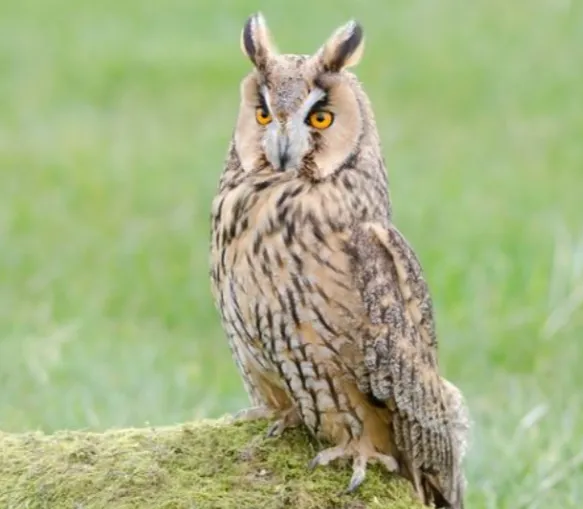The facts have been gathered from trustworthy sources and double-checked with an Ornithologist.
There are 18 different types of owls that can be found in the state! This blog post will discuss the different owl species that can be found in Virginia, as well as their characteristics and habits. We will also provide tips on how to identify an owl if you happen to see one in the wild. So, if you’re interested in learning more about Virginia’s owls, keep reading!
Most Common Owls in Virginia
Barn Owl
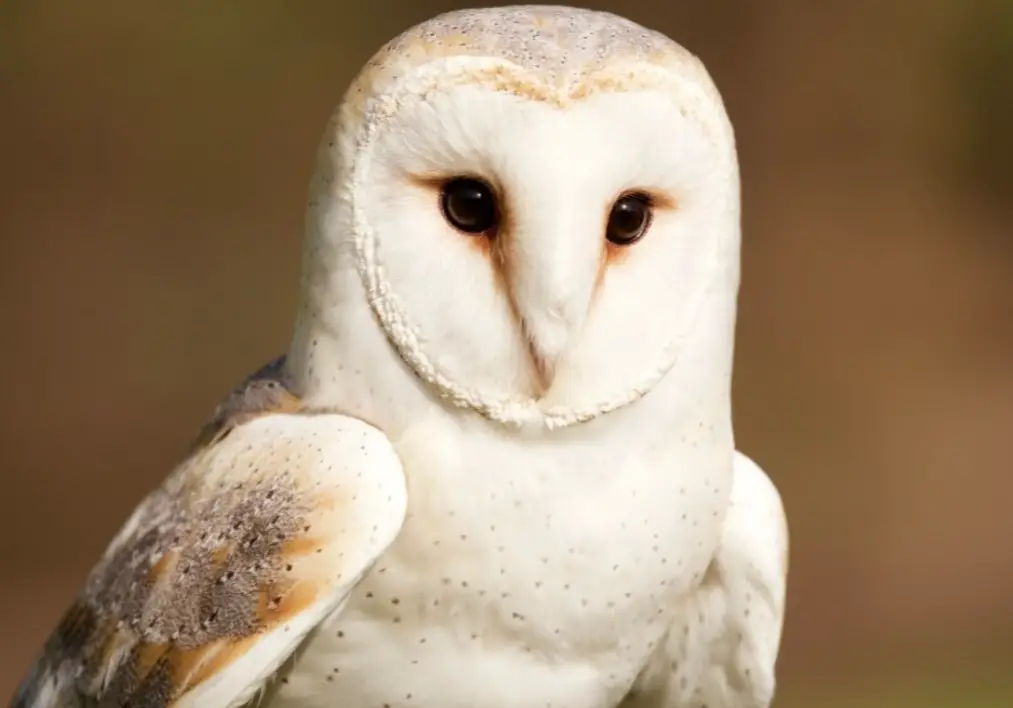
The barn owl is a medium-sized owl with a distinctive white, heart-shaped facial disk. They are found in open habitats throughout Virginia. Barn owls hunt primarily by sound, using their sensitive hearing to locate small mammals in the dark.
They are most active at dawn and dusk, but can sometimes be seen hunting during the day. During the breeding season, barn owls nesting in Virginia typically mate for life. Females lay a clutch of two to six white eggs in early spring.
When looking for a barn owl in Virginia, keep an eye out for their pale, buffy-white plumage. Look for them roosting in trees or on fence posts during the day. At night, you may hear their eerie screech as they search for prey.

Northern Saw-whet Owl
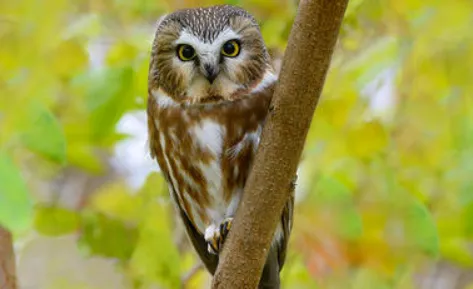
If you’re lucky enough to spot a Northern Saw-whet Owl in Virginia, there are some things you can look for to help identify it. These owls are relatively small, with a body length of around seven to eight inches.
They have dark brown or grayish upperparts, and their underparts are pale with heavy streaks. Northern Saw-whet Owls also have a white “bib” on their chest, and a dark band across their belly.
In terms of behavior, Northern Saw-whet Owls are mostly nocturnal. However, you may see them hunting during the day if there is a heavy overcast. These owls are also relatively sedentary, meaning they don’t move around a lot.
Instead, they tend to perch in the same spot for long periods of time. If you see a Northern Saw-whet Owl, it’s likely that it won’t be moving around much.
If you’re interested in finding Northern Saw-whet Owls in Virginia, the best time to look is during the fall and winter months. These owls typically arrive in Virginia in October, and they stay until April.

Great Horned Owls
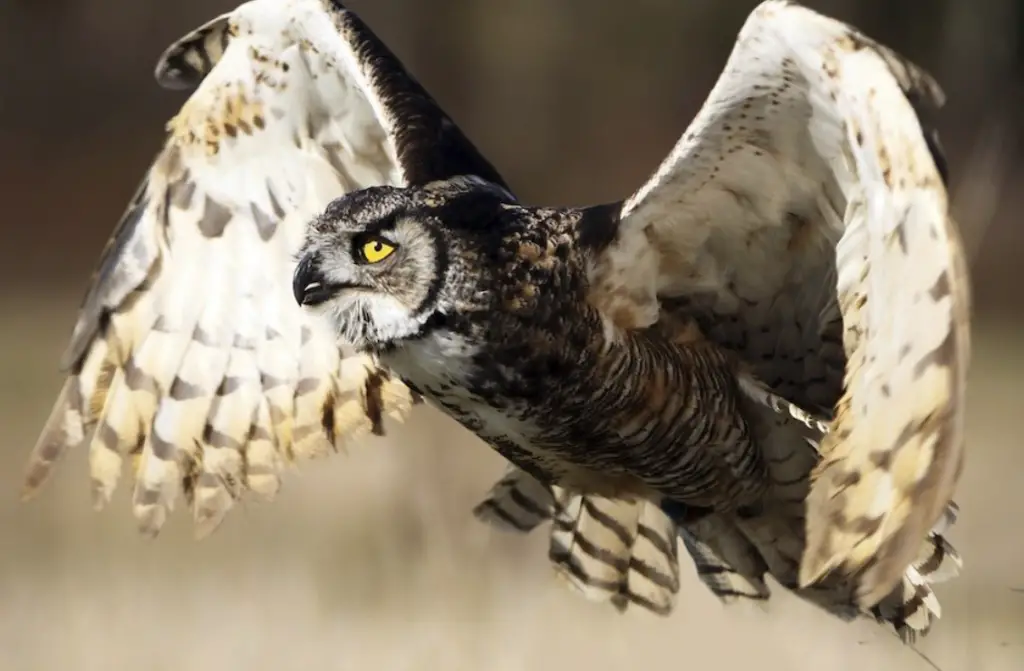
Great Horned Owls are one of the most common owls in North America, and they can be found in a variety of habitats. In Virginia, they are most likely to be found in forests or near bodies of water.
The Great Horned Owl gets its name from the tufts of feathers on its head that resemble horns. These “horns” are actually called plumicorns, and they help the owl to camouflage itself while hunting. Great Horned Owls are also known for their large, round eyes and their ear tufts, which are long feathers that stick up from the sides of their head.
Great Horned Owls are nocturnal, which means that they are most active at night. During the day, they like to perch in trees or on other high places, where they can keep an eye out for their next meal. Great Horned Owls primarily eat small mammals such as rabbits and squirrels, but they will also eat birds, reptiles, and insects.
If you’re lucky enough to see a Great Horned Owl in the wild, you can usually hear it before you see it. These owls hoot, and their call sounds like “whoo-hoo-hoo hooooo.” You might also hear them make a sound that has been described as “snoring-like” or “sneeze-like.”

Barred Owl
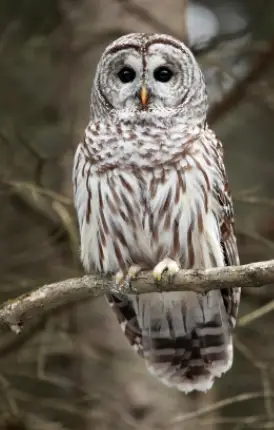
The Barred Owl is a large owl with a round head and no ear tufts. It has dark eyes and a yellow beak. The upperparts are brown with white bars and the underparts are pale with dark streaks.
This owl is found in woods and forests in the eastern United States. It feeds on small mammals, birds, and reptiles. The Barred Owl is active at night and roosts during the day in trees. It nests in tree cavities.
The best way to identify a Barred Owl is by its call, which is a series of eight hoots that sound like “who-cooks-for-you, who-cooks-for-you-all”. This owl is also sometimes called the hoot owl or eight hooter. Another identifying characteristic of the Barred Owl is its behavior.
It often perches on branches in an upright position and bobs its head up and down. It also has a habit of swooping down on prey from a low perch. When hunting, it uses its sharp claws and beak to kill its prey.

Short-eared Owls
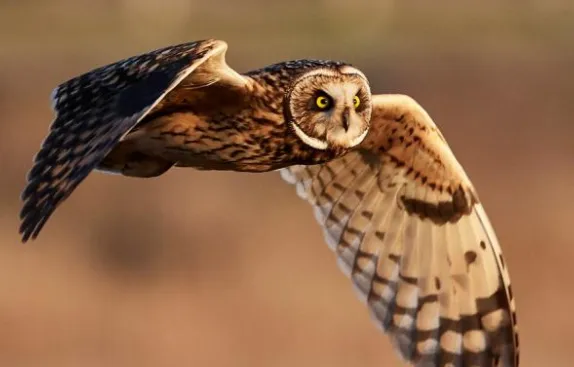
Short-eared owls are found in Virginia, but they are not as common as some other owl species. They have a distinctive appearance with large ear tufts and yellow eyes. These owls are mostly active at night and hunt for small mammals such as mice and voles.
If you’re lucky enough to see a short-eared owl, you’ll likely hear its distinctive call first. These owls make a “qui-hoo” sound that is shorter and sharper than the “hoo-hoo” of a great horned owl. Short-eared owls are fascinating creatures and it’s always a treat to see one in Virginia!
If you’re interested in seeing a short-eared owl in Virginia, your best bet is to go out at night during the winter months. These owls are most active then and are more likely to be seen hunting in open fields.

Eastern Screech Owls
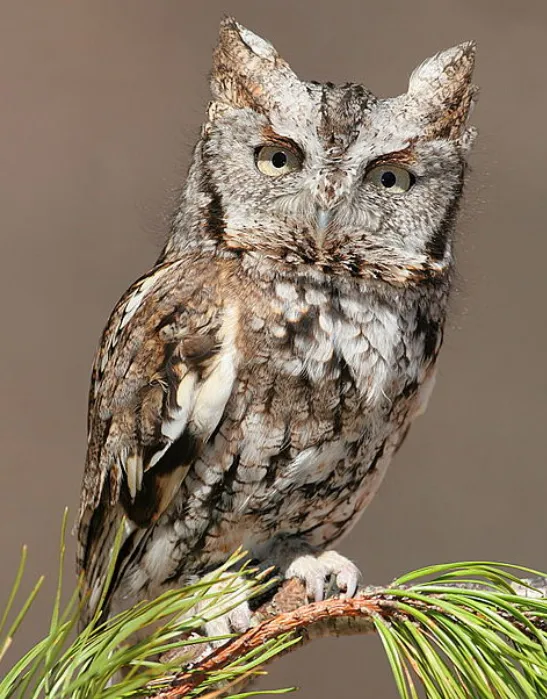
Eastern Screech Owls are small, nocturnal owls. They are found in deciduous and mixed forests throughout eastern North America. The best way to identify an Eastern Screech Owl is by their call, which is a high-pitched trill.
Eastern Screech Owls are generally shy and solitary birds, but they can be aggressive when defending their territory.
If you’re lucky enough to spot an Eastern Screech Owl, you’ll likely see it perched on a tree branch or hunting from a low perch. These owls hunt by watching and listening for prey, then swooping down to catch it with their sharp talons. Their diet consists mainly of small mammals and insects, but they will also eat birds, reptiles, and amphibians.
Eastern Screech Owls are relatively easy to attract to backyards, making them a fun bird to watch for both beginning and experienced birders.

Related post: Types of Owls in Tennessee
Long-eared Owl
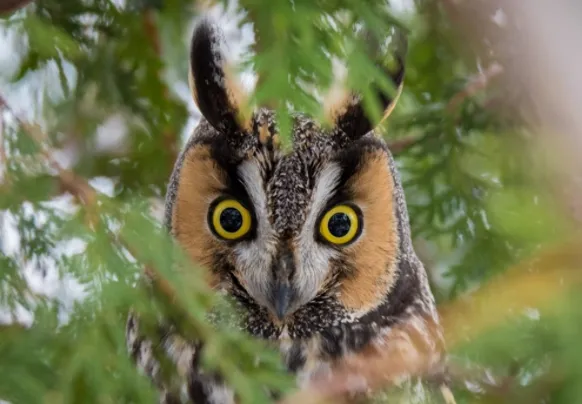
Habitat: The Long-eared Owl is found in woodlands, both deciduous and coniferous. They are also found in agricultural areas, grasslands, and even urban parks and gardens.
Nesting: Long-eared Owls nest in tree cavities, cliffs, or old nests of other birds. They will also use man-made nest boxes.
Diet: The diet of the Long-eared Owl is mostly small mammals such as mice, voles, and shrews. They will also eat birds, reptiles, and insects.
Behavior: Long-eared Owls are mostly nocturnal hunters. They will perch on a tree branch and watch for prey. They will also hunt by flying low over the ground.
Identifying Characteristics: The Long-eared Owl is a medium-sized owl with long ear tufts. It has dark brown eyes and a yellow beak. The upperparts are brown with white spots, and the underparts are white with brown streaks.

Snowy Owl
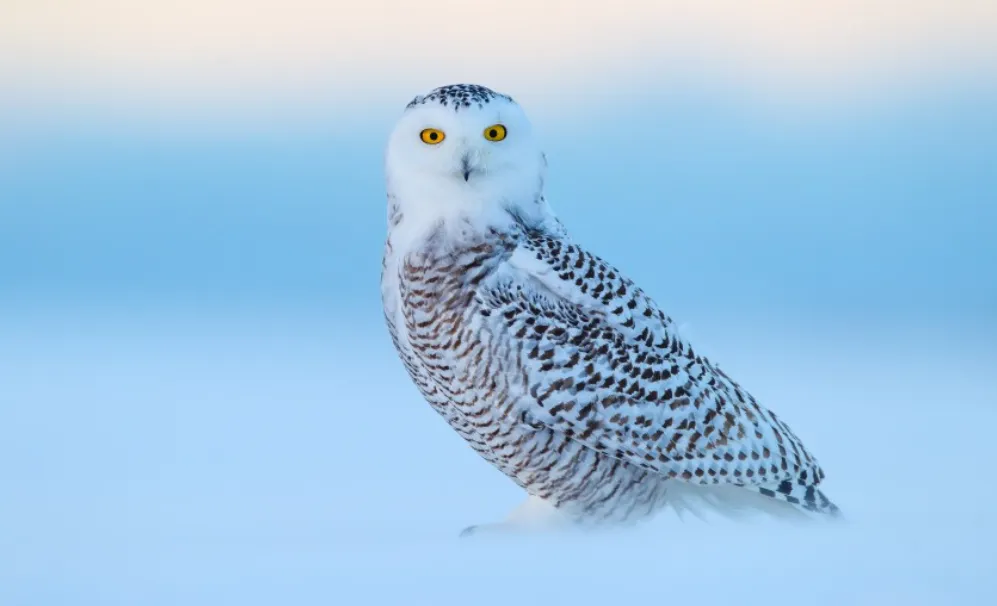
The Snowy Owl is a large owl of the typical owl family. Snowy Owls are native to Arctic regions in North America and Eurasia. These birds are mostly white with some brown bars or spots, and they have large round heads with yellow eyes.
Male Snowy Owls tend to be all white, while females usually have more brown markings. Juvenile owls are similar in appearance to adults but tend to be more heavily streaked with brown.
Snowy Owls are found in open habitats such as tundra, prairies, or steppes. In North America, they nest on the ground in areas with little vegetation. These owls hunt during the day and night, and they primarily eat small mammals such as lemmings, voles, and mice. Snowy Owls will also eat birds, reptiles, and insects.
When looking for a Snowy Owl in Virginia, keep an eye out for open habitats such as fields or marshes. Look for a large white owl with yellow eyes, and look for brown bars or spots on the bird’s wings and body.
If you’re lucky, you may even see a juvenile owl with its heavily streaked brown plumage. Keep your eyes peeled and you just might spot one of these magnificent birds!

Are owls good to have around your house?
This is a difficult question to answer, as it depends on the specific owl species and the environment in which you live. Some owl species are more beneficial to have around than others, and some environments are better suited for owls than others. In general, however, owls can be good to have around your house if you take proper precautions.
One of the benefits of having an owl around your house is that they can help to control rodents and other pests. Owls are natural predators of small mammals, so if you have an owl living near your home, it can help to keep the rodent population in check. This can be especially beneficial if you live in an area with a lot of farmland, as owls can help to control the population of rodents that damage crops.
What sounds do owls make in Virginia?
Owls in Virginia make a variety of sounds, depending on the species. The most common owl in Virginia is the Long-eared Owl, which makes a hooting sound that is often described as “mournful” or “eerie.” Other owl species found in Virginia include the Snowy Owl, the Great Horned Owl, and the Barred Owl. Each of these owl species has a different call, so if you’re interested in hearing the various sounds that owls make in Virginia, it’s best to go out and listen for them yourself!
What kind of owls are native to Virginia?
Virginia is home to a variety of owl species, including the Long-eared Owl, the Snowy Owl, the Great Horned Owl, and the Barred Owl. Each of these owl species has its own unique call, so if you’re interested in hearing the various sounds that owls make in Virginia, it’s best to go out and listen for them yourself!
What is the most common owl in Virginia?
The most common owl in Virginia is the Long-eared Owl. This owl species is characterized by its long ear tufts, dark brown eyes, and yellow beak. The Long-eared Owl is a medium-sized owl with brown upperparts and white spots. The underparts are white with brown streaks.

An avid ornithologist, zoologist and biologist with an unwavering passion for birds and wild animals.
Dr. Wilson’s journey in ornithology began in childhood and led him to obtain a Ph.D. in Ornithology from the prestigious Avian Research Institute. He has worked closely with renowned experts in the field and conducted extensive research and field studies globally.

